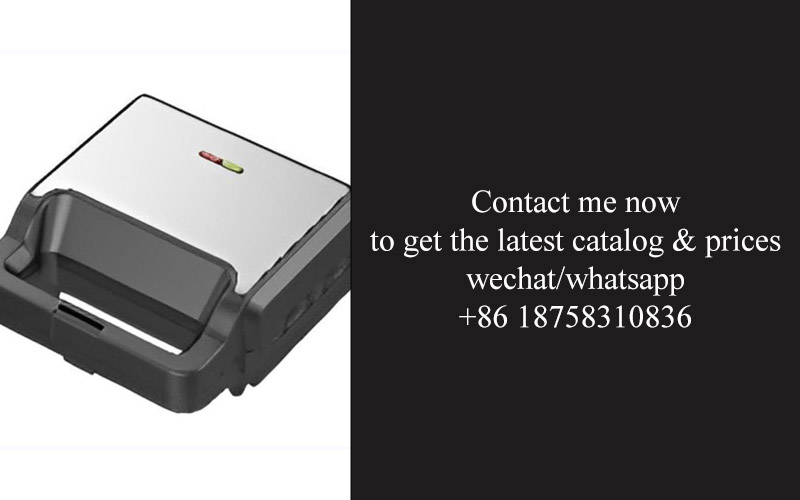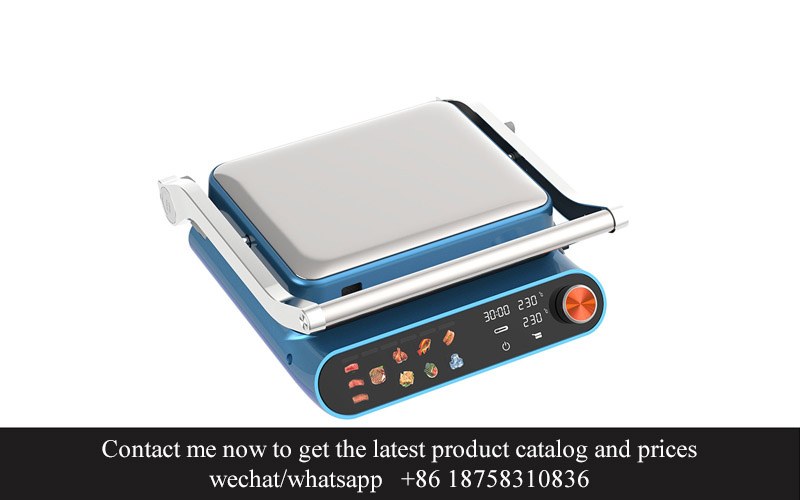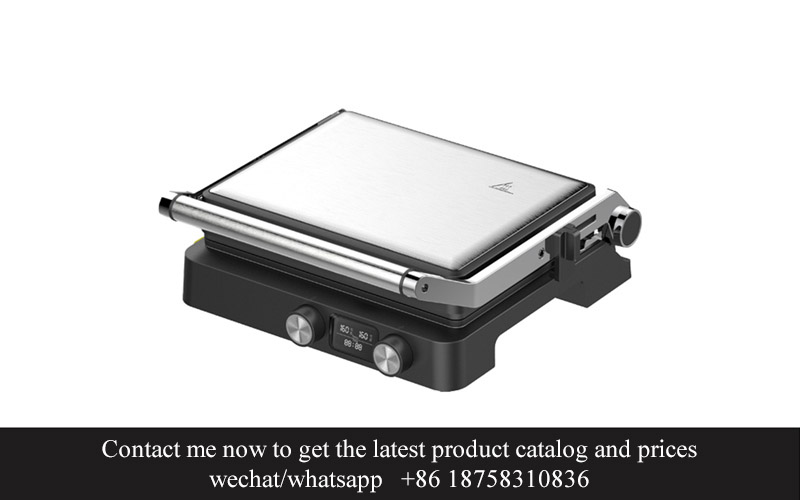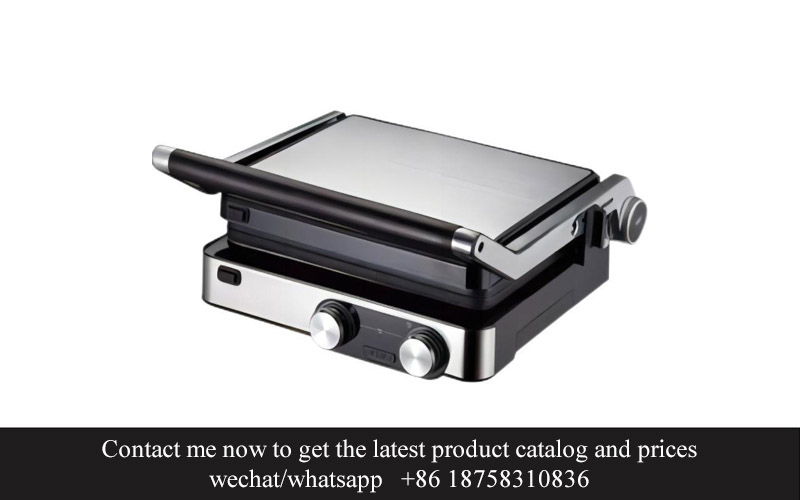Address
304 North Cardinal
St. Dorchester Center, MA 02124
Work Hours
Monday to Friday: 7AM - 7PM
Weekend: 10AM - 5PM
Address
304 North Cardinal
St. Dorchester Center, MA 02124
Work Hours
Monday to Friday: 7AM - 7PM
Weekend: 10AM - 5PM

Grill manufacturing has seen a remarkable transformation over the years, with one significant shift being the transition towards in-house mold making. This evolution has not only revolutionized the way grill components are produced but has also paved the way for innovative designs and enhanced product quality. In this article, we delve into the advantages of in-house mold making, the role of technology in this process, and the success stories of companies embracing this trend. We also explore the current market trends and consumer preferences that are shaping the grill industry, along with the challenges and solutions in in-house mold making. Finally, we,。
The evolution of grill manufacturing has been a fascinating journey, marked by continuous innovation and technological advancements. From the simple outdoor cooking pits of ancient civilizations to the sleek, high-tech grills of today, the grill has become an integral part of modern culinary culture. Let’s delve into the key stages of this evolution.
In the earliest days, grilling was a rudimentary process, often involving a fire pit or a makeshift grill made from stones or branches. These early grills were used for cooking over open flames, with meats, vegetables, and even bread being the primary fare. The focus was purely on survival and basic nourishment, with little consideration for taste or presentation.
As societies progressed, so did the methods of grilling. The advent of metalworking allowed for the creation of more sophisticated grill structures, such as iron grates that could be placed over fire. These grills were more efficient and allowed for better control of the cooking process, which in turn led to improvements in flavor and texture.
The 19th century saw the birth of the charcoal grill, which revolutionized the way people cooked outdoors. The ability to use a controlled source of heat, such as briquettes or lump charcoal, offered a more consistent cooking experience and allowed for a wider range of recipes. This period also marked the beginning of the commercial grill market, with manufacturers starting to produce grills for sale to the general public.
The 20th century was a time of rapid growth and innovation in grill manufacturing. The introduction of gas grills in the 1950s brought about a new era of convenience. These grills used natural gas or propane, providing an instant source of heat that could be adjusted with simple knobs. The rise of the suburban lifestyle in the United States further fueled the demand for gas grills, as they became a symbol of outdoor living.
As the century progressed, manufacturers began to focus on design and functionality. The introduction of features like side burners, warming racks, and temperature control systems made grilling an even more enjoyable experience. Additionally, the use of stainless steel and other durable materials ensured that grills could withstand the rigors of outdoor use.
The early 21st century has been characterized by a renewed interest in traditional cooking methods, including grilling. This has led to a surge in the popularity of charcoal grills, which are often preferred for their ability to impart a distinct smoky flavor to food. At the same time, there has been a push for eco-friendly and sustainable grilling options, with some companies introducing charcoal alternatives and grill covers made from recycled materials.
Another significant development in grill manufacturing has been the advent of in-house mold making. This process allows companies to create custom molds for grill components, which can lead to more efficient production and innovative designs. By producing their own molds, manufacturers can quickly adapt to market demands and consumer preferences, ensuring that their products remain at the forefront of innovation.
The evolution of grill manufacturing has also been influenced by the rise of culinary trends. The demand for exotic spices and international flavors has led to the creation of specialized grill accessories and cooking techniques. From teppanyaki grills to kamado-style ceramic smokers, the industry has responded to the desire for diverse and unique cooking experiences.
In conclusion, the evolution of grill manufacturing has been a testament to human ingenuity and the ever-growing desire for culinary excellence. From the simplest of open fires to the most sophisticated high-tech grills, the grill has come a long way. The future of grill manufacturing looks bright, with continued innovation and a focus on sustainability driving the next wave of advancements.

The landscape of grill manufacturing has undergone a remarkable transformation over the years, and one of the most significant shifts has been the move towards in-house mold making. This transition, driven by various factors, has reshaped how companies approach the production process, leading to enhanced efficiency, customization, and control over the quality of their products.
Initially, grill manufacturers relied heavily on external mold suppliers for the production of molds, which were essential for creating the intricate shapes and designs of grill components. However, as the industry grew more competitive and customer demands evolved, the need for a more agile and responsive production process became apparent.
One of the primary reasons for this shift is the desire for faster turnaround times. With in-house mold making, companies can reduce the time it takes to bring a new product to market. By eliminating the need to outsource mold production, they can respond more quickly to market trends and customer feedback, ensuring that their products remain at the forefront of innovation.
Moreover, in-house mold making allows for greater control over the quality of the molds. When molds are produced internally, companies can closely monitor the manufacturing process, ensuring that the molds meet the exact specifications required for their grill components. This level of oversight is often difficult to achieve when working with external suppliers, where communication and quality control can sometimes be compromised.
Customization has also become a crucial factor in the grill industry. With in-house mold making, manufacturers can easily create custom molds to accommodate unique design requests or specific product features. This flexibility not only caters to niche markets but also enables companies to offer a wider range of products, enhancing their market appeal.
Another important aspect of in-house mold making is cost efficiency. While setting up an in-house mold-making capability may require an initial investment, over time, it can lead to significant cost savings. By reducing dependency on external suppliers, companies can avoid the markup that often comes with outsourcing. Additionally, with a dedicated in-house team, manufacturers can optimize their processes, leading to lower production costs and potentially higher profit margins.
The rise of advanced manufacturing technologies has also played a pivotal role in the shift towards in-house mold making. Today, companies have access to sophisticated CAD/CAM software and 3D printing technologies that make it possible to design and create molds with unprecedented precision and speed. This technological advancement has lowered the barriers to entry for in-house mold making, making it more accessible to even smaller grill manufacturers.
Furthermore, the trend towards sustainability has influenced the move towards in-house mold making. By producing molds internally, companies can minimize their carbon footprint and reduce waste. They can also ensure that the materials used in mold production are eco-friendly, aligning with the growing demand for sustainable products in the market.
Despite these advantages, the transition to in-house mold making is not without its challenges. It requires a significant investment in equipment, training, and skilled personnel. Companies must also be prepared to manage the complexities of mold maintenance and repair, which can be a full-time job in itself.
In the realm of innovation, in-house mold making has opened up new avenues for grill manufacturers. It has become a catalyst for the development of advanced features such as adjustable heat zones, smart temperature controls, and durable materials that can withstand harsh outdoor conditions. These innovations not only improve the functionality of grills but also enhance the overall cooking experience.
In conclusion, the shift towards in-house mold making in the grill manufacturing industry is a strategic move that reflects the changing dynamics of the market. By embracing this trend, companies are able to respond more effectively to customer needs, innovate at a faster pace, and ultimately, gain a competitive edge in a highly competitive global market.

In-house mold making has emerged as a transformative trend within the grill manufacturing industry. This shift offers a plethora of advantages that not only enhance the production process but also drive innovation and quality improvements. Let’s delve into these benefits:
Increased Control Over Quality and DesignManufacturers who produce their own molds have direct oversight of the design and production process. This allows for a higher level of precision and consistency in the final product. Custom molds can be tailored to specific design requirements, ensuring that every grill produced meets the exact specifications, from the shape of the grill grates to the intricate details of the heat zones.
Reduced Lead Times and Faster PrototypingWith in-house mold making, companies can significantly reduce lead times for new product development. Instead of waiting for external mold manufacturers to create the molds, the production team can quickly iterate on designs and make necessary adjustments. This agility enables faster prototyping and can help businesses stay ahead in a competitive market.
Cost Savings Over TimeWhile initial investments in in-house mold making equipment may be substantial, the long-term cost savings can be substantial. By eliminating the need to outsource mold production, companies can avoid the costs associated with third-party moldmakers, such as tooling fees and non-disclosure agreements. Additionally, the ability to reuse molds for multiple production runs can lower the per-unit cost of molds.
Enhanced Flexibility and CustomizationIn the dynamic grill market, customers are increasingly looking for customized solutions. In-house mold making enables manufacturers to offer a wider range of options, from different grill sizes and shapes to specialized features like ergonomic handles or unique grill grate patterns. This flexibility allows for quick adaptation to market demands and the ability to produce limited edition or niche products.
Improved Product Consistency and ReliabilityConsistency is key in the grill manufacturing industry. With in-house mold making, manufacturers can ensure that every part produced is uniform, reducing the likelihood of defects and improving the overall reliability of the product. This leads to fewer returns and increased customer satisfaction.
Better Integration with Production ProcessIncorporating in-house mold making into the production line can streamline the manufacturing process. By having the molds on-site, manufacturers can optimize the workflow, reducing the need for multiple handling steps and reducing the risk of damage to the molds or the products being made.
Increased Capacity for InnovationWhen companies have control over their molds, they can experiment with new materials, designs, and features more easily. This can lead to breakthroughs in grill technology, such as improved heat distribution, enhanced durability, and innovative cooking surfaces that offer a superior grilling experience.
Reduced Dependency on External SuppliersBy owning the mold-making process, manufacturers reduce their dependency on external suppliers. This can be particularly beneficial in terms of supply chain stability, especially in an industry where raw material prices and availability can fluctuate.
Enhanced Competitive AdvantageUltimately, in-house mold making can provide a competitive edge. Companies that can quickly respond to market changes, produce high-quality custom products, and maintain tight control over their supply chain are better positioned to capture market share and maintain profitability.
These advantages of in-house mold making are reshaping the grill manufacturing landscape, driving companies to invest in their own mold-making capabilities and push the boundaries of what is possible in kitchen appliance design and production.

In the world of kitchen appliances, grills have seen a surge in innovation, thanks largely to the shift towards in-house mold making. Custom molds have become the driving force behind these design advancements, offering several key benefits that push the boundaries of grill technology and aesthetics.
Grill designs that once adhered to traditional forms are now evolving with a new level of sophistication. The integration of custom molds has allowed manufacturers to craft components with intricate patterns, seamless contours, and tailored specifications. Let’s delve into the specific ways these molds have influenced grill design:
1. Enhanced AestheticsCustom molds have enabled grill manufacturers to create appliances that are not only functional but also visually stunning. The ability to mold complex and unique designs into the grill’s structure has resulted in products that stand out on countertops and patios. Grills with intricate grill plates, stylish handles, and sleeker lines have become increasingly popular, as they appeal to consumers looking for both beauty and performance.
2. Unique Grill PatternsThe use of custom molds has introduced a variety of grill patterns that offer distinct cooking experiences. From traditional cross-hatching to innovative wave patterns, these designs can influence the way food is seared and the texture of the final dish. Some molds even create a concave surface that prevents food from sticking, making the grill easier to clean and maintain.
3. Tailored Cooking SurfacesGrill components can now be designed with specific cooking surfaces in mind. Custom molds allow for the creation of plates with different textures, such as a non-stick coating or a high-heat-resistant surface. This means that grills can cater to various cooking techniques and preferences, from low-and-slow smoking to high-heat grilling, all while ensuring consistent results.
4. Innovative Cooking SystemsInnovative grill designs have been made possible through the use of custom molds. Molds can be used to create components for complex cooking systems, such as double-walled grills with adjustable temperatures, integrated smoking chambers, and multi-level cooking platforms. These systems enhance the functionality of grills, making them versatile enough to cater to the needs of professional chefs and enthusiastic home cooks alike.
5. Improved Structural IntegrityThe precision of custom molds ensures that grill components fit perfectly together, resulting in improved structural integrity. Grills with custom molds are less likely to have gaps or weak points that could lead to performance issues or safety hazards. This attention to detail has also allowed for the creation of modular grill designs, where individual components can be easily replaced or upgraded.
6. Enhanced Safety FeaturesCustom molds have enabled the integration of safety features into grill designs. For instance, molds can be used to create components with built-in heat sensors, anti-tip brackets, and secure latches. These features not only enhance the user experience but also contribute to the overall safety of the grill.
7. Personalization and Brand IdentityCustom molds allow grill manufacturers to offer personalized products that reinforce their brand identity. Whether it’s a grill with a company logo embossed into the metal or a grill with a design that reflects the company’s values, these personalized touches can make a significant impact on customer perception and loyalty.
8. Custom Molds for Unique ComponentsIn addition to the traditional grill plates and covers, custom molds have been used to create a myriad of other components. These include unique side burners, specialized utensils holders, and even built-in features like temperature gauges or digital control panels. The versatility of custom molds means that virtually any grill accessory can be tailored to meet specific needs or aesthetic desires.
The rise of in-house mold making has democratized grill design, allowing smaller manufacturers to compete with industry giants by offering unique and high-quality products. As technology continues to advance, the potential for innovation through custom molds is boundless, and the grill industry is poised to see even more creative and effective grill designs in the years to come.

In the realm of in-house mold making, technology has emerged as a silent yet powerful ally, reshaping the landscape of grill design and production. The integration of cutting-edge tools and software has not only streamlined the mold-making process but has also opened up new avenues for innovation and efficiency. Let’s delve into how technology is transforming this crucial aspect of grill manufacturing.
The digital age has brought with it a wave of 3D modeling and CAD (Computer-Aided Design) software, which has revolutionized the way molds are conceptualized and designed. These tools allow designers to create intricate and precise mold designs that were once impossible to envision. With a few clicks, engineers can simulate the behavior of the mold under various conditions, ensuring that the final product meets the highest standards of quality and performance.
Advanced CNC (Computer Numerical Control) machines have taken over traditional manual molding processes, offering unparalleled precision and consistency. These machines can mill, turn, and drill complex mold parts with remarkable accuracy, reducing the margin for error in the manufacturing process. The result is a mold that can produce grill components with tight tolerances, ensuring a seamless fit and improved durability.
Additive manufacturing, often referred to as 3D printing, has become a game-changer in the mold-making industry. This technology allows for the creation of molds with intricate geometries that would be difficult or impossible to produce using traditional methods. For grills, this means the ability to design components with unique features, such as specialized venting systems or ergonomic handles, that enhance user experience.
The integration of sensors and IoT (Internet of Things) technology has brought a new level of intelligence to in-house mold making. Real-time data collection allows for the monitoring of mold performance and the detection of any potential issues before they escalate. This proactive approach not only prevents costly repairs but also ensures that the molds are operating at peak efficiency.
In the realm of material science, technology has played a pivotal role in the development of new mold materials. High-performance plastics and composites are now commonly used in mold making due to their superior thermal stability, chemical resistance, and mechanical strength. These materials not only extend the lifespan of molds but also enable the creation of components that can withstand the demands of high-heat environments.
The rise of AI and machine learning has also had a significant impact on in-house mold making. AI algorithms can analyze vast amounts of data to predict mold performance, identify areas for improvement, and even optimize the design process. For grill manufacturers, this means faster mold development cycles and a more streamlined production process.
Furthermore, the use of virtual reality (VR) and augmented reality (AR) has provided a new dimension to mold making. Designers and engineers can visualize and interact with mold designs in a virtual environment, making it easier to identify design flaws and iterate on the design before the mold is even built. This not only saves time but also reduces the risk of costly mistakes.
Lastly, the adoption of cloud computing has made it possible for manufacturers to collaborate more effectively across different departments and even with external partners. With cloud-based software, teams can work on the same project simultaneously, regardless of their physical location, leading to more efficient design and production cycles.
In conclusion, technology has become an indispensable component of in-house mold making, driving innovation, improving efficiency, and enhancing the overall quality of grill manufacturing. As these technologies continue to evolve, we can expect even more groundbreaking advancements that will further transform the grill industry.

In the realm of grill manufacturing, several companies have embraced the transition to in-house mold making, leading to remarkable success stories. Here are a few case studies that showcase how this shift has propelled these businesses forward.
The story of GrillerTech, a mid-sized grill manufacturer, is one of adaptation and innovation. By investing in their own mold-making capabilities, they were able to respond quickly to market demands for custom grill designs. This agility not only helped them secure new contracts but also improved their reputation for offering unique and high-quality products.
GrillerTech’s in-house mold-making team started by developing a line of high-end, stainless steel grills with intricate designs. The custom molds allowed them to create intricate patterns and unique shapes that were not available in the market. This differentiation became a major selling point, and their sales soared as customers sought out their one-of-a-kind grills.
Another success story comes from BarbecueBliss, a company known for its eco-friendly grills. By bringing mold making in-house, they were able to reduce their carbon footprint and streamline their production process. The team at BarbecueBliss developed molds for grills made from recycled materials, ensuring that their products were both sustainable and functional.
The custom molds enabled BarbecueBliss to create a range of eco-friendly grills that were durable and aesthetically pleasing. This innovative approach resonated with environmentally conscious consumers, leading to a significant increase in sales and a loyal customer base.
GrillMaster, a well-established brand in the grill industry, faced stiff competition and declining market share. They decided to revamp their product line and invested in in-house mold making. The company’s engineers worked tirelessly to design molds that would enable them to produce a new line of smart grills with integrated temperature controls and Wi-Fi connectivity.
The custom molds allowed GrillMaster to produce grills that were not only cutting-edge in technology but also visually appealing. The new line was a hit with consumers, who appreciated the convenience and advanced features. GrillMaster’s sales rebounded, and the company regained its position as an industry leader.
Sunset Sizzle, a small, family-owned grill manufacturer, used in-house mold making to enter the premium grill market. With a focus on handcrafted, artisanal grills, the company’s custom molds enabled them to create unique and high-quality products that were in high demand.
Sunset Sizzle’s in-house team developed molds for grills with hand-forged metalwork and intricate details. The attention to detail and the ability to produce these custom designs at a competitive price set them apart from larger competitors. Their products became sought-after by grill enthusiasts and collectors, leading to rapid growth and a strong brand identity.
Each of these success stories demonstrates the power of in-house mold making in the grill industry. By taking control of their mold production, these companies were able to innovate, differentiate their products, and ultimately achieve significant growth and market success. The willingness to invest in custom mold-making capabilities has paid off for these businesses, proving that innovation and adaptability are key to thriving in a competitive market.

In the ever-evolving landscape of kitchen appliances, the demand for grills has surged, driven by a passion for outdoor cooking and a desire for convenience. Market trends and consumer preferences have played a pivotal role in shaping the industry, influencing the design, features, and materials used in grill manufacturing. Here’s a closer look at the current trends and what consumers are seeking in their grill investments.
The growing popularity of smart technology has extended into the grill market, with consumers increasingly looking for appliances that offer connectivity and control. Features like Wi-Fi-enabled grills that can be monitored and adjusted via a smartphone app have become more than just a novelty; they’re a necessity for tech-savvy consumers who want to tailor their grilling experience to their specific needs.
Sustainability is also a key factor in consumer preferences. Eco-conscious buyers are drawn to grills made with sustainable materials or those that promote energy efficiency. This could mean a grill that uses less gas or electricity, or one that is made from recycled materials. Brands that can demonstrate their commitment to the environment are likely to appeal to this segment of the market.
Aesthetic appeal is another trend that’s reshaping the grill market. Consumers are no longer just looking for a functional appliance; they want a grill that complements their outdoor decor and adds to the overall ambiance of their patio or backyard. Designs that blend modern aesthetics with traditional elements or that offer a wide range of color options are becoming more popular.
Safety remains a top priority. As grilling accidents can occur, consumers are seeking grills with safety features like auto-shutoff timers, child-proof locks, and burners with flame guards. These features not only protect users but also give peace of mind to those who are wary of potential hazards associated with grilling.
Health consciousness is on the rise, and this trend is influencing grill preferences as well. Consumers are looking for grills that facilitate healthier cooking methods, such as those with infrared burners that reduce smoke and char formation, or those with a high-quality porcelain-coated grill surface that prevents harmful chemicals from leaching into the food.
The convenience factor is also a major consideration. Grills that are easy to clean, maintain, and transport are in high demand. Features like adjustable cooking heights, side burners for boiling or sautéing, and even built-in storage for utensils and cooking tools are becoming more common, reflecting a shift towards appliances that streamline the grilling process.
Versatility is another trait that consumers value in grills. The ability to cook a variety of foods on a single grill—whether it’s vegetables, meats, or even desserts—has become a selling point. Grills that offer multiple cooking surfaces or that can be converted into smokers or rotisseries are increasingly sought after.
Lastly, the social aspect of grilling is a significant factor in market trends. With the rise of gatherings and outdoor entertaining, grills that can accommodate larger groups or that have features like built-in tables or prep areas are becoming more popular. Consumers are looking for appliances that not only enhance their cooking capabilities but also serve as a hub for family and friends to enjoy each other’s company.
The grill market is dynamic, with trends and preferences constantly shifting. However, one thing remains clear: consumers are seeking high-quality, innovative, and user-friendly grills that not only meet their cooking needs but also reflect their personal style and values. Brands that can stay ahead of these trends and deliver products that resonate with their target audience will continue to thrive in this competitive landscape.

In the realm of in-house mold making, challenges are as integral as the solutions that emerge from them. From precision to production timelines, the journey is fraught with hurdles that, when navigated effectively, can lead to remarkable advancements. Here’s a glimpse into the challenges and the innovative ways they’re being addressed:
The Precision Paradox- Achieving the desired level of precision in in-house mold making is a delicate balance. The smallest of imperfections can lead to defects in the final product, yet the demand for intricate designs is ever-increasing.
Material Mastery- Each mold requires a specific material that can withstand the manufacturing process and the stresses of use. Selecting the right material is crucial, and the challenge lies in finding a balance between durability, cost, and ease of processing.
Design Versatility- As manufacturers push the boundaries of design, molds must be adaptable to new shapes and sizes. The challenge is to create molds that can handle complex geometries without compromising on performance.
Production Speed- The pace of modern business demands quick turnaround times. Molds that take weeks to produce can slow down the entire production line. The challenge is to find ways to speed up the mold-making process without sacrificing quality.
Cost Management- The cost of tooling can be substantial, especially for custom molds. Manufacturers must find ways to reduce costs without compromising the quality of the molds, which can impact the final product.
Quality Control- Ensuring that every mold meets the stringent quality standards is a constant challenge. The complexity of the molds can make it difficult to maintain consistency across batches.
Technology Integration- The integration of new technologies into the mold-making process is a challenge in itself. Keeping up with advancements and ensuring that they are effectively implemented requires a significant investment in training and infrastructure.
Environmental Concerns- With the growing emphasis on sustainability, manufacturers are challenged to produce molds in an environmentally friendly manner. This involves using eco-friendly materials and reducing waste.
Regulatory Compliance- The mold-making industry is subject to various regulations, and staying compliant can be challenging. Manufacturers must navigate through a maze of standards and certifications while ensuring that their processes are up to date.
Customization Balancing Act- Custom molds are the backbone of in-house mold making, but they come with their own set of challenges. Balancing customer requirements with the practicalities of production is a delicate act that requires expertise and experience.
Training and Expertise- The skill set required for in-house mold making is highly specialized. Attracting and retaining talent, as well as providing ongoing training, is a challenge that can impact the overall efficiency of the process.
Supply Chain Management- The supply chain for mold-making materials and components is complex. Ensuring a steady supply of high-quality materials while managing costs is a challenge that requires careful planning and negotiation.
Innovation Overload- With so many new technologies and materials available, deciding what to invest in can be overwhelming. The challenge is to innovate responsibly, choosing solutions that will provide the most value without overextending resources.
By addressing these challenges head-on, in-house mold makers are not just surviving; they’re thriving. They’re pushing the boundaries of what’s possible, driving innovation, and setting new standards in the industry. The solutions they develop are not just about overcoming obstacles; they’re about creating a future where precision, speed, and sustainability go hand in hand.

The shift towards in-house mold making in the grill manufacturing industry has been a subtle yet significant transformation. This move has redefined the way products are designed, produced, and delivered to the market. Let’s delve into the advantages that this shift brings.
Mold making is the art of crafting the molds that shape the plastic components of grills. Historically, these molds were often outsourced to specialized mold-making companies. However, with the rise of in-house mold making, companies are now taking control of this critical process. This change is driven by several compelling reasons.
One of the most immediate benefits is the speed of production. When molds are kept in-house, companies can rapidly iterate and test new designs without the delays associated with outsourcing. This agility allows for quicker responses to market demands and the ability to bring products to market faster than competitors.
Quality control is another crucial advantage. By having in-house mold making, companies can closely monitor the entire mold-making process. This ensures that the molds are of the highest quality, leading to consistent and precise parts. The elimination of third-party involvement also reduces the risk of miscommunication or errors that can occur when passing information between different entities.
Cost savings are a significant factor in the shift towards in-house mold making. While the initial investment in mold-making equipment can be substantial, over time, it can lead to significant cost reductions. By reducing the need for outsourcing, companies can cut down on the expenses associated with transportation, handling, and the potential for damaged or lost parts.
Customization is at the heart of in-house mold making. Companies can now tailor their grill components to meet specific design requirements, which was not always possible when relying on standard molds provided by external suppliers. This level of customization not only enhances the aesthetic appeal of the grills but also improves their functionality and user experience.
The in-house mold-making process has also led to innovations in grill design. With the ability to create complex and unique molds, manufacturers are exploring new shapes, materials, and features. For instance, we’ve seen grills with innovative heat distribution systems, ergonomic handles, and even smart technology integration, all made possible through custom molds.
The role of technology in in-house mold making cannot be overstated. Advanced CAD (Computer-Aided Design) software allows designers to create intricate mold designs with precision. 3D printing technology is also being used to prototype and test molds before they are mass-produced, reducing the risk of errors and speeding up the development cycle.
Case studies of companies that have successfully transitioned to in-house mold making highlight the tangible benefits. For example, a major grill manufacturer reported a 20% reduction in lead times and a 15% decrease in overall production costs after establishing an in-house mold-making facility. This not only improved their competitiveness but also allowed them to respond more effectively to customer feedback.
Market trends and consumer preferences are constantly evolving, and the grill industry is no exception. Today’s consumers are more environmentally conscious, seeking durable and sustainable products. In-house mold making allows manufacturers to use recycled materials and to create parts that are easier to recycle at the end of their life, aligning with these preferences.
The challenges of in-house mold making are not without their drawbacks. Maintaining the precision and quality of molds over time requires a skilled workforce and ongoing investment in technology and training. Additionally, the initial capital outlay for equipment and facilities can be a barrier for smaller companies.
However, solutions are emerging. Collaborations with educational institutions to develop a skilled workforce and partnerships with technology providers to access cutting-edge equipment are becoming more common. These strategies help mitigate the challenges and make in-house mold making more accessible to a wider range of companies.
Looking ahead, the future of grill manufacturing with in-house molds is bright. As technology continues to advance, we can expect to see even more sophisticated and efficient mold-making processes. The ability to produce complex molds in-house will likely lead to even greater design innovation and customization. This will not only cater to the ever-changing consumer demands but also open up new markets and opportunities for growth in the grill industry.

In-House mold making has emerged as a pivotal factor in the evolution of grill manufacturing. As companies strive to differentiate themselves in a competitive market, the ability to create custom molds in-house has opened new avenues for innovation and efficiency. Here are some insights into the transformative impact of in-house mold making on the grill industry.
Grill manufacturers are increasingly recognizing the value of having their mold-making capabilities in-house. This shift is not just about having a faster production cycle; it’s about the agility to respond to market demands and the freedom to experiment with new designs. By producing molds internally, companies can reduce lead times and streamline the supply chain, leading to quicker product launches and improved customer satisfaction.
The ability to create custom molds in-house has also allowed grill manufacturers to push the boundaries of design. From unique shapes and sizes to innovative cooking surfaces, custom molds enable the creation of grills that stand out in the marketplace. This level of customization is not just attractive to consumers looking for a distinctive cooking experience; it also opens up new revenue streams through premium products and niche markets.
Technology has played a crucial role in the advancement of in-house mold making. The integration of advanced CAD/CAM software and 3D printing technology has revolutionized the mold-making process. These tools allow designers to create complex molds with precision and efficiency, reducing the need for manual adjustments and shortening the time from concept to production.
One of the most significant advantages of in-house mold making is the direct control over quality. By producing molds internally, manufacturers can maintain strict quality standards throughout the production process. This means that the final product—be it a gas grill, charcoal grill, or electric grill—will meet or exceed the company’s expectations. The elimination of third-party mold suppliers also reduces the risk of receiving defective molds, ensuring that the manufacturing process runs smoothly.
Success stories in in-house mold making are becoming more common in the grill industry. Companies like Weber and Char-Broil have leveraged their internal mold-making capabilities to introduce innovative products that have become staples in the market. These companies have been able to respond swiftly to consumer trends and create products that are both functional and aesthetically pleasing.
In terms of market trends, there is a growing preference for eco-friendly and sustainable grills. Consumers are more conscious of the environmental impact of their purchases, and manufacturers are responding by producing grills made from recycled materials and using energy-efficient designs. In-house mold making enables these companies to create custom molds for components that are not only eco-friendly but also durable and efficient.
The grill market is also seeing a surge in demand for smart grills. These advanced cooking appliances come with features like Bluetooth connectivity, temperature control, and even remote monitoring. The ability to create precise molds for intricate electronic components is essential for integrating these smart technologies into grill designs.
Challenges in in-house mold making include the need for skilled labor, the cost of maintaining state-of-the-art equipment, and the time required to develop new molds. However, these challenges are being mitigated by the adoption of advanced software and automation. Training programs are also being implemented to ensure that the workforce is up to date with the latest techniques and technologies.
Looking ahead, the future of grill manufacturing with in-house molds is bright. As technology continues to advance, we can expect to see even more sophisticated and personalized grill designs. The integration of materials science, robotics, and artificial intelligence will likely lead to grills that are not just cooking appliances but also smart, connected devices.
In conclusion, in-house mold making has become a catalyst for innovation in the grill industry. It has enabled manufacturers to respond to consumer demands more quickly, create unique products, and maintain high-quality standards. As the market evolves, the role of in-house mold making is set to become even more integral to the success of grill manufacturers worldwide.